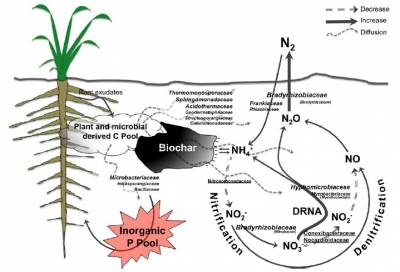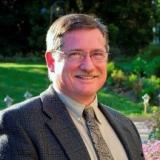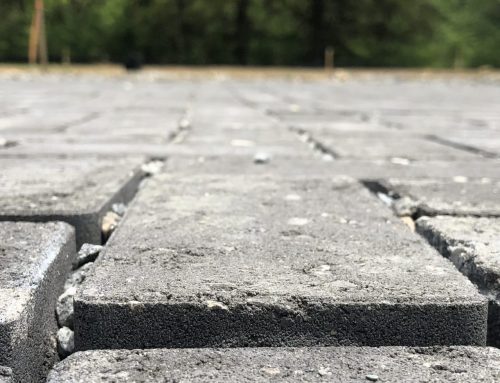The old adage, “necessity is the mother of invention” speaks volumes to the efforts being invested to develop the next generation of smart Best Management Practices (BMPs) (1) in our efforts to restore the Bay and meet the EPA’s TMDL requirements. Part of this innovation is the development and pilot testing of a variety of enhanced media and soil amendments.
One enhanced media gaining considerable interest is “biochar“ (http://www.biochar-international.org/), a charcoal-like material. While “biochar” is a relatively new term, it is not a new soil amendment – it is a 2000-year-old technology, rediscovered. In the United States, biochar research is hardly ten years old, yet solid research shows that properly prepared and intelligently applied, biochar provides considerable benefits to engineered and highly degraded soil.
Biochar has five important properties not found in other soil amendments, with the possible exception of activated carbon: high surface area and porosity per unit volume (Figure 1), significant cation exchange capacity (CEC) and adsorption capacity, and a stable carbon structure that serves as an efficient medium for electron transfer. The first four properties result in increased water and nutrient retention, which subsequently allows for plant uptake and microbial degradation of nutrients.
A key aspect with how biochar is used, which also has a direct impact on the varied effectiveness results, is that, like a fine wine, as it ‘ages’ it gets better. Fresh raw biochar is dead, dry and lifeless as moondust. It’s just recalcitrant carbon (C6) – that critical element that is the building block of life and the linking element between all other elements (O, C, H, N, Ca, P) that make up living organisms. Properly prepared biochar is like a “biological carbon battery”, stored up with water, nutrients and mineral ions, with a vast amount of microbial real estate (surface area) for the growth of our new ‘Who-ville’ (2) community to expand and flourish.
When this biological carbon battery is integrated as part of a media enhancement or soil amendment, the soil symbiotic processes are super charged. Biochar’s most vital service is to be colonized by a full array of diverse and “cheap” microbial labor to do the tedious metabolic work of keeping critical biogeochemical cycles in balance (Figure 2).

Figure 2. Schematic depicting how biochar affects the different bacterial families identified in the study and the associated biogeochemical cycles that the genera and species identified from those families influenced (Font size indicate population abundance)
“Inoculation success isn’t blind luck or random chance. Success requires the right microbes, right substances, right recipe, right environment, and right timing to assure microbes don’t just survive, but come alive and thrive.” (3). With two-thirds of the world’s terrestrial biodiversity found in soils, the roles and functions of the ‘Who-ville’ wee-beasties in our soils should play an important role in our efforts to restore the bay’s health. Isn’t it time we shift our paradigm towards building and restoring conducive habitats within our distributed engineered systems, and on a landscape level of our vast amounts of degraded urban soils by allowing the Earth’s most ancient communities to participate in this challenge – Voluntarily?
Additional Reading:
Biochar induced soil microbial community change: Implications for biogeochemical cycling of carbon, nitrogen and phosphorus, 2011 http://www.sciencedirect.com/science/article/pii/S0031405611000618
Biochar effects on soil biota – A review, 2011 http://www.sciencedirect.com/science/article/pii/S0038071711001805
References:
(1) Law, N.L, R.D. Christianson, L. Fraley-McNeal and G. Hoffmann, Building the Next Generation of Smart BMPs: Media Enhancements for Phosphorus Removal, Watershed Science Bulletin, June 2014.
(2) Dr. Seuss. How the Grinch Stole Christmas!. New York, NY: Random House. Originally published in 1957.
(3) Yarrow, D, Using Biochar in Soil – Grower Guidelines & Instructions, May 2014.
Chuck Hegberg is a Sr. Environmental Consultant/Restoration Specialist with 30 years of experience in the Chesapeake Bay watershed, Eastern USA and Internationally primarily in West Africa. He is a biochar enthusiast, open biochar user and pusher and from time-to-time researcher since 2006. Chuck is employed as the Mid-Atlantic Manager for the environmental/engineering consulting firm Skelly and Loy, Inc., headquartered in Harrisburg, Pennsylvania.








